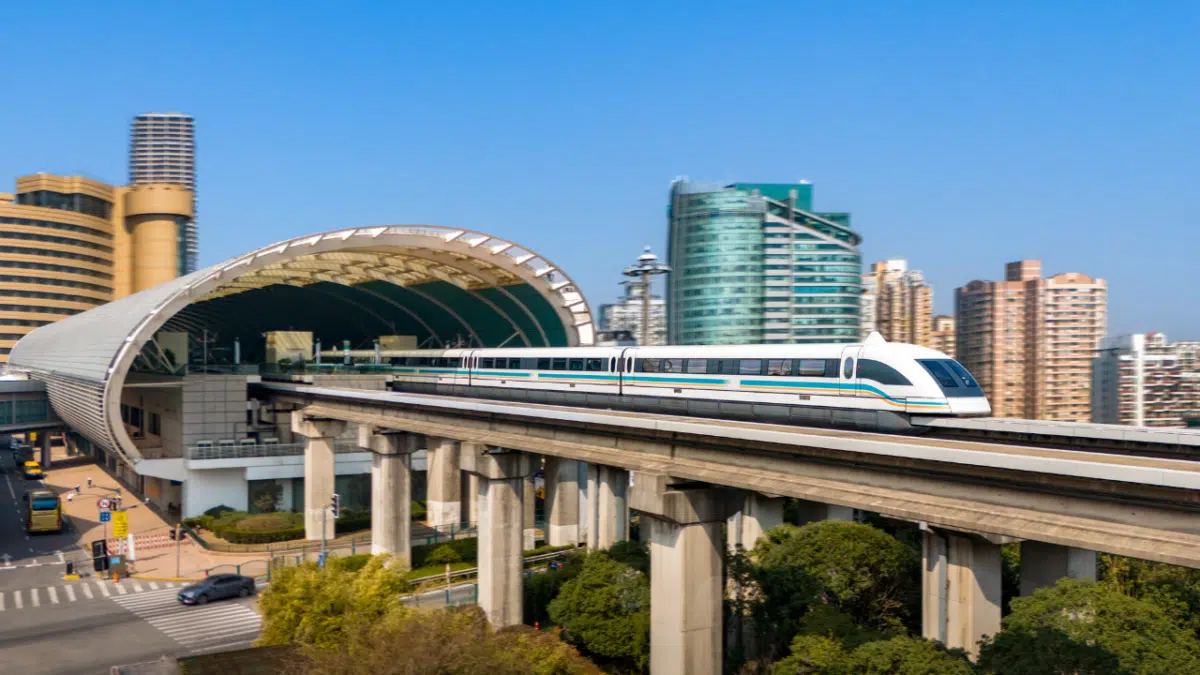Show table of content Hide table of content
China’s high-speed rail technology has once again made headlines with the unveiling of the revolutionary CR450 train. This groundbreaking achievement marks a significant milestone in railway engineering as China released footage showing a train capable of reaching commercial speeds of 400 km/h. The development represents a quantum leap in public transportation technology, continuing China’s dominance in the high-speed rail sector.
China’s revolutionary CR450: breaking speed barriers
The China State Railway Group recently released a video showcasing their next-generation high-speed train, the CR450. This technological marvel is designed to operate at a commercial speed of 400 km/h, with maximum capabilities reaching 450 km/h. This unprecedented velocity establishes it as the world’s fastest commercial train, surpassing current operational speeds by a significant margin.
The CR450 represents a remarkable evolution in transportation technology, similar to how humanity has advanced communication technologies to reach extraterrestrial distances. The train’s development involved extensive engineering innovations focused on aerodynamics, weight reduction, and friction minimization.
Beijing has announced that production of the CR450 will begin this year, though an official launch date remains unconfirmed. This new model will replace the current CR400 series, which already operates at impressive speeds but falls short of the new benchmark. The acceleration in train technology demonstrates China’s commitment to pushing transportation boundaries while maintaining practical commercial applications.
For context, the 400 km/h commercial speed is approximately 80 km/h faster than France’s TGV operations. This difference dramatically reduces travel times—a journey equivalent to Paris-Marseille could be completed in under two hours on the CR450, compared to approximately three hours on current French high-speed systems.
Engineering marvels behind the 400 km/h achievement
Achieving commercial speeds of 400 km/h required significant engineering innovations. The CR450’s design incorporates advanced materials including carbon fiber composites and magnesium alloys, resulting in a structure that’s 10% lighter than its predecessor. This weight reduction is crucial for maintaining stability at extreme velocities while improving energy efficiency.
The train’s nose has been further elongated for enhanced aerodynamics, building on designs that already resemble aircraft fuselages. This aviation-inspired approach extends to the interior configuration, where engineers have implemented aerospace design principles to maximize comfort at high speeds. The meticulous attention to aerodynamic efficiency recalls efforts in other fields to overcome resistance, such as European innovations in environmental engineering.
China China is adopting the hyperloop concept to launch its trains at 620 mph.
Perhaps most revolutionary is the CR450’s permanent magnet system, which substantially reduces air friction. This technology represents the culmination of years of research into electromagnetic applications for transportation. The system works by creating opposing magnetic fields that minimize contact points and resistance, allowing for smoother operation at extreme speeds.
The engineering advancements in the CR450 have implications beyond mere speed. The materials science breakthroughs could influence other industries, from automotive manufacturing to vehicle production that creates long-term value. Similarly, the energy efficiency improvements might offer insights for other transportation sectors struggling with consumption rates and environmental impact.
High-speed rail competition in Asia and global implications
The CR450 emerges in an increasingly competitive high-speed rail landscape, particularly in Asia. Japan’s Shinkansen and South Korea’s KTX have long been prominent players, but China has systematically advanced its technology to lead the field. This competitive environment has accelerated innovation across the region, benefiting transportation infrastructure globally.
The technological race reminds us of other fields where competition drives progress, such as electric vehicle development, though hopefully with more consistent delivery on promises. China’s achievement may pressure European and Japanese manufacturers to accelerate their own development programs to maintain relevance in the global market.
Looking beyond the CR450, China has announced plans to implement Maglev (magnetic levitation) train lines by 2035. These trains, developed collaboratively by Chinese and Japanese engineers, can theoretically reach 603 km/h. The strategic deployment of such technologies could reshape intercity travel paradigms and potentially challenge short-haul air travel in many markets.
The significance extends beyond transportation metrics. High-speed rail development represents national technological capability and infrastructure sophistication. Countries investing in advanced rail systems demonstrate commitment to preserving innovations while advancing new technologies, creating infrastructure legacies that can serve populations for generations.
The future of ultra-fast train travel
The CR450’s introduction suggests a future where ground transportation increasingly competes with aviation for medium-distance travel. With speeds approaching half that of commercial aircraft but with greater energy efficiency and city-center accessibility, high-speed trains could reshape transportation habits globally.
The health benefits of train travel shouldn’t be overlooked either. Unlike sedentary car journeys, train travel typically involves more movement, contributing to the physical activity necessary for maintaining health. Passengers might walk considerable distances through stations and train cars, not unlike those who track their step counts for fitness purposes.
China China: Two tourists flash their buttocks on the Great Wall and end up behind bars.
As with any emerging technology, security considerations will become increasingly important. Just as digital platforms require vigilance against vulnerabilities, high-speed rail systems will need robust safety protocols and cybersecurity measures to protect critical infrastructure controlling these ultra-fast vehicles.
The ultimate vision extends beyond individual train lines to integrated continental networks. China’s Belt and Road Initiative already includes plans for connecting Asia and Europe via high-speed rail. If successful, such networks could transform international travel patterns, reduce aviation-related carbon emissions, and create new economic corridors between previously distant urban centers. The CR450 represents not just a faster train, but a step toward this interconnected future.


